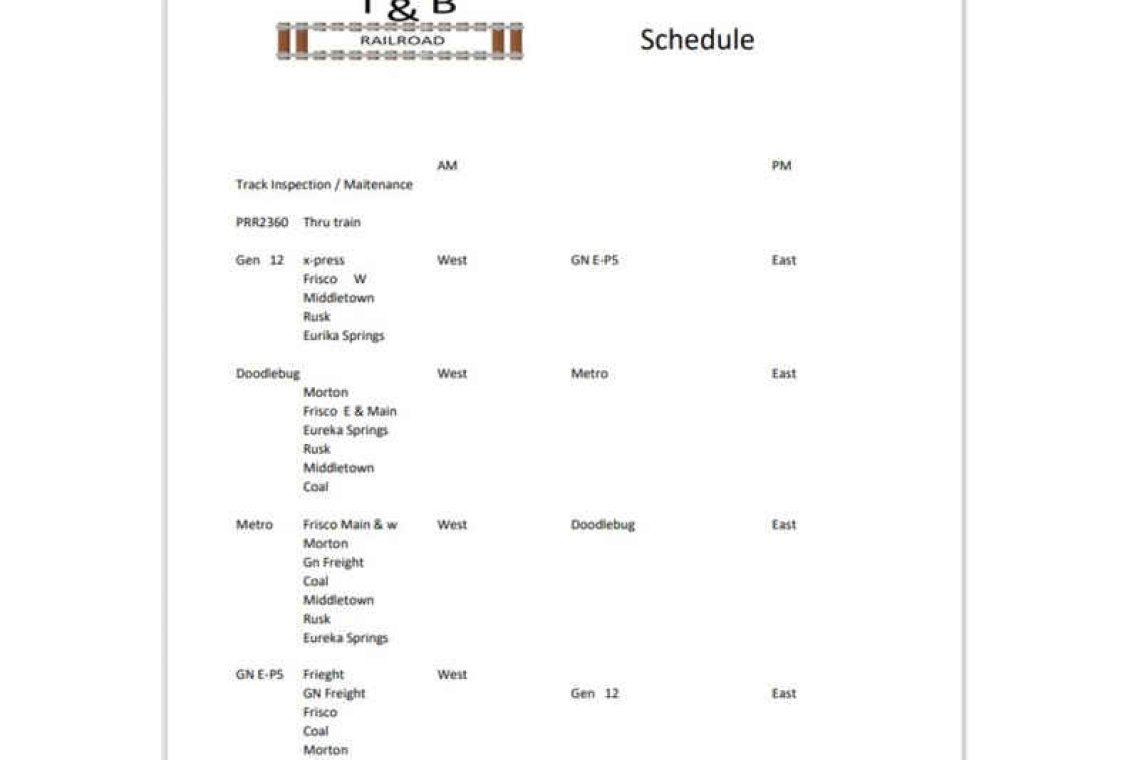It is time your railroad set up a schedule. There are basically two types of trains: Passenger and Freight. Most weekdays will start with commuter runs as people need to get to work. The trains will start in residential areas and make stops at the various factories and businesses.
Around 10:00am, another round of commuter trains will pick up shoppers going into the city. Around lunch, the first set of shoppers will return home. Starting around 1:00pm, a second round of people will head to town: Some will shop; others will run errands. Most will return home between 3:30 and 4:00pm before the evening rush.
By 4:30 to 5:30pm, the city will empty as commuters head home. Between the commuter trains, freight trains will roll. In the morning, they will drop off supplies; and in the afternoon, they will pick up goods to take to market.
Freight trains are unique in that they just don’t stop to let people or cargo off – they actually exchange an empty box or tank with a full one. The engine rolls up to a switch; its load is separated; it pulls forward; the switch is thrown; it backs up, hooks up to a few empties and then pulls forward. The switch is thrown again. It backs up and connects to the train then pulls forward until the signal that the last car has past the switch. Next, it reverses back onto the side track.
The last two or three cars of its consist are disconnected; it pulls forward; the switch is closed and the train is off to its next pick-up and delivery – lots of movement and fun.
First, decide where you need the train to stop. You need both passenger stops and freight stops. As you set up the schedule, you need only a few minutes for a passenger stop but as much as 30 minutes for a freight stop. It is now time to set up your schedule.
Every layout will be different – but place your stops approximately equal distance apart. It is best to have about four passenger stops and at least three freight stops, as the freight stops take more work and do not need a lot as the switches take up extra space. Before you can actually set the schedule, you have to estimate the distance between stops and how long it takes a train to make the run.
It might be too much stop-and-go if you just go from one stop to the other. Many modelers will run the train two, three or even four times around the layout to simulate distance between stops and, of course, to increase the fun, as running the train is lots more fun than stopping one. So, list the four passenger stops and time your laps at a speed you are happy with. Distance is measured as speed times time.
Next, set the schedule. You know the distance and time it will take to travel the distance, so look at your inventory: Do you have enough locomotives and cars to run three or four passenger trains and store them at the end of the loop? Or are you going to run one train as a passenger consist and let a freight train run in between? Either method is fun.
The next thing we will talk about is keeping to the schedule – in another “Around the tracks with Coach Tom”, we will talk about a fast clock.
Until next time, I hope to see you around the tracks.







